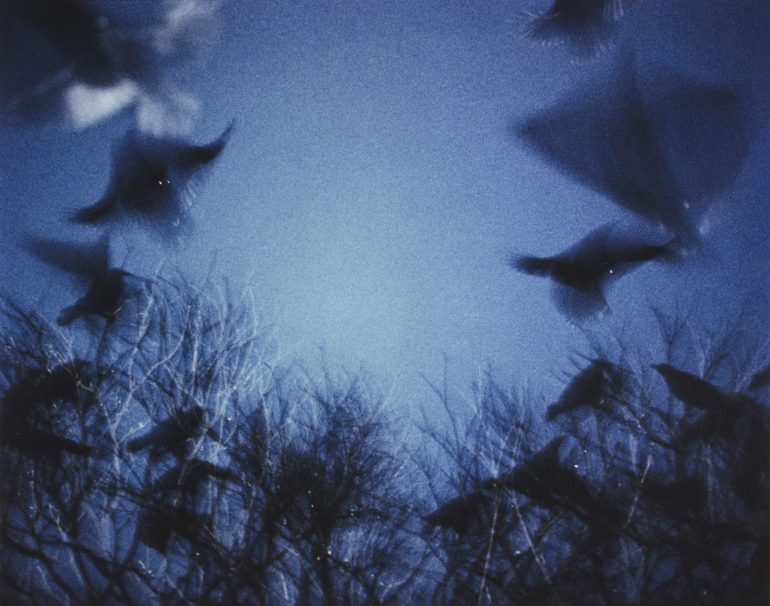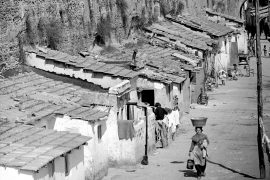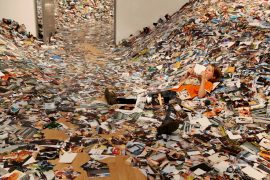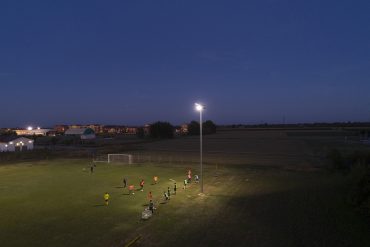by Daniela Mericio
_
Radical experimenter, one of the most unique contemporary Japanese photographers. Born in 1932 in a family of photographers, gloomy and cheerful, melancholic and fun, always suspended between game and despair. Constantly tormented by the pain for the end of his second marriage and by depression, which he attempts to drown in alcohol.
The exhibition is a journey into his work between the ’70s and 1992, the fatal year when he fell down the stairs in a bar, remaining in a coma until his death (2012). His life-work, inaccessible for 20 years, was gradually brought to light after his death. Curated by the Foam Museum in Amsterdam, where it was presented in 2018, the exhibition is the first major European retrospective in collaboration with Tomo Kosuga, director of the Masahisa Fukase Archives in Tokyo. “People know him for black and white series Ravens , but the archive revealed unpublished works and less known aspects. By the end of his life he worked in colour or with colour by painting on prints” says Kosuga. “What he did in the nineties works is a very extreme expression, it looks sometimes weird, strange. He photographed mainly himself. In a sense, he pioneered the concept of selfie.” Contact sheets with hundreds of self-portraits emerged from the archives. Fukase exposes his inner self and his intimate life to the world, so much so that his work has been defined as an autobiography in images. In the surrounding reality he sees a reflection of himself, every subject of his photos is a symbolic representation of his own existence. He works by series and themes that are repeated over the years, almost obsessively. The exhibition is also divided into themes, highlighting the versatility and originality of his genius.
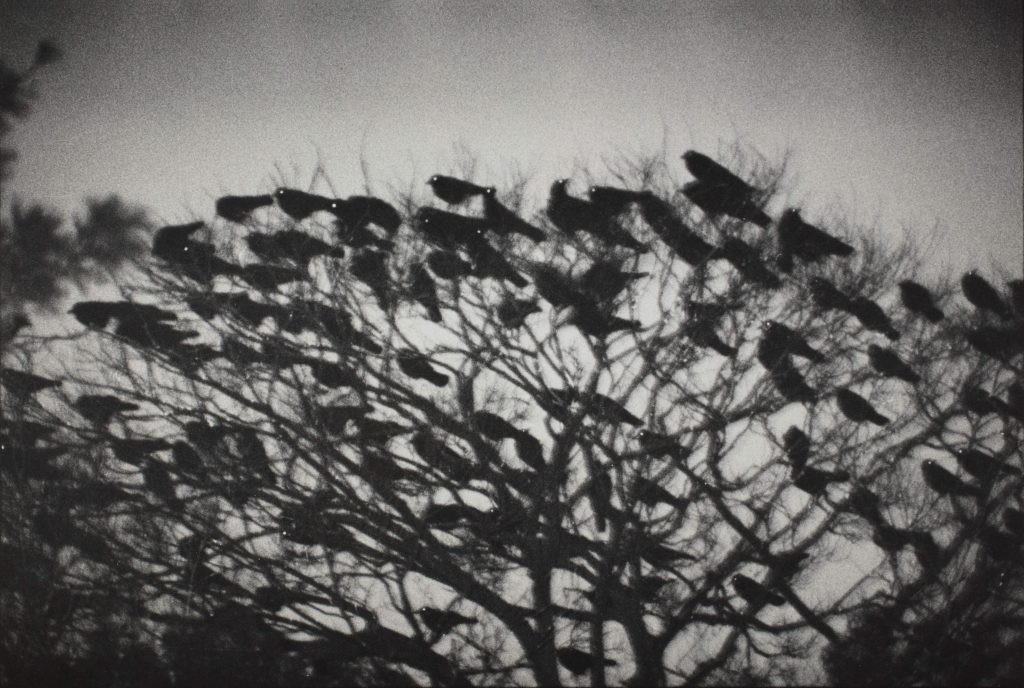
RAVENS (1975-1985) – On display there are vintage prints by Fukase. The series, known as The solitude of ravens, was initiated during a trip to the native Hokkaido, while his marriage was falling apart, and continued for years in a relentless aesthetic search. In Kanazawa, his wife’s hometown, he photographed crows at dusk, creating a melancholic and poetic narration, made of dark, grainy images. Flying flocks stand out against the sky, black silhouettes perched on trees: birds are sinister presences, metaphor of the mood of the author, of his dark side, lost in the abyss of his solitude. The theme is also explored in colour in the rare Polaroids of the Raven Scenes series (1985) where he produced vivid images and play with double exposures. In 1992 he created a thousand small prints, yet unpublished, on which he drew colour lines with felt-tip pens, following the contours of the crows’ shapes. It is the last chapter of a magnificent obsession.
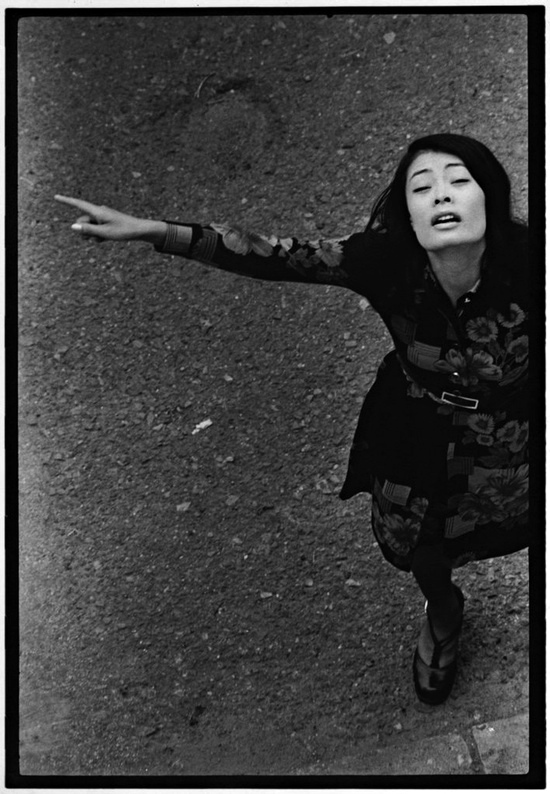
YOKO (1963-1976) – Muse, model and wife for 12 years. Intense and transgressive, Yoko Wanibe was the centre of the life and work of Fukase. “We have lived together for ten years, but he has only seen me through the lens” she said “I believe that all the photographs of me were unquestionably photos of himself”.
From window (1974) is a series in black and white, taken from the window, which portrays Yoko as she leaves the house every day. The style is light, the cut is hazardous, Yoko is radiant, but some shots in which she moves away from the house seem to presage the divorce of 1976. In the first exhibition of 1961, Kill the pig, Fukase put together images of the first wife Yukiyo and their stillborn baby with photographs of a slaughterhouse. Reflection on love and pain, life and death, developed from personal experiences.
SASUKE (1977-1978) – “In my 40 years on earth, a cat has always hung around me like a shadow.”
The inscription introduces the playful series dedicated to the cat Sasuke, inseparable companion after the separation from his wife. The photographer follows the cat in his acrobatics, captures its typical expressions and improbable climbs, creating small stories. Cats are a constant presence in Fukase’s life. He declared that he was not so interested in photographing cute cats, but rather “I wanted to capture the endearing image of cats with my own image reflected in their eyes.” He called this series “a self-portrait in disguise.” In a way, a declaration of love and complicity.
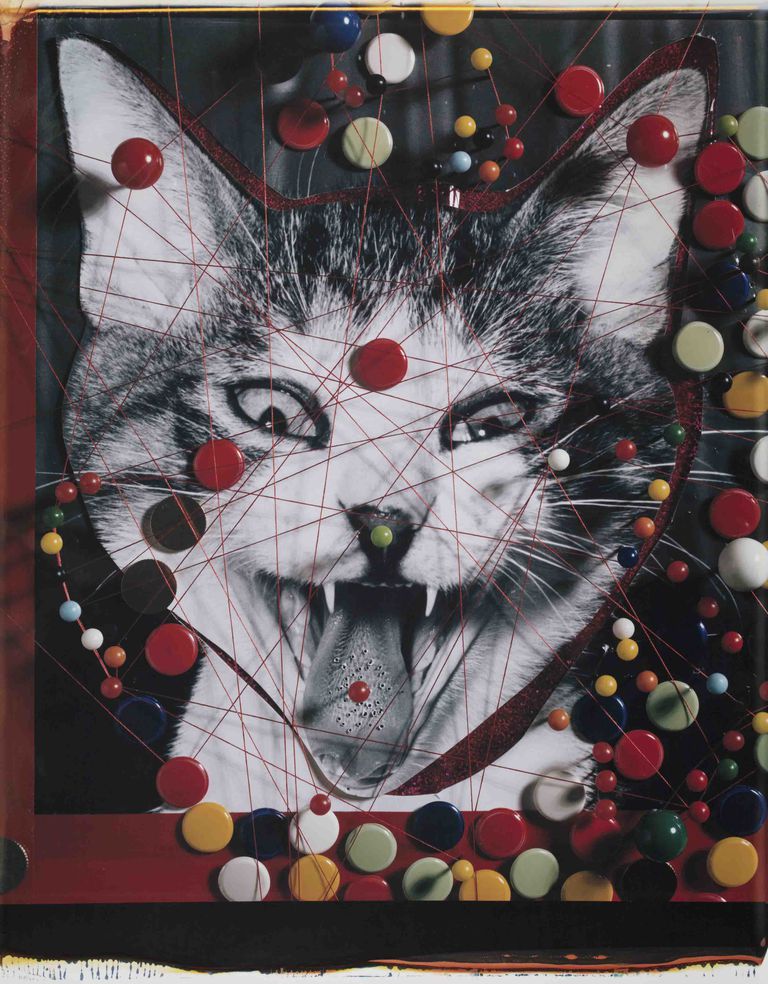
A GAME (1983) – Colour series made with a giant Polaroid camera, 1.5 meters high, capable of producing high quality images of 50 x 60 cm. He portrays himself, the cat Sasuke, a model. He decorates the prints with thumbtacks, coloured threads, pins, then photographs them again with the Polaroid. Fukase’s face is studded with pins. A pin goes through the tongue of the model, creating a piercing effect. “It was a bit risqué: it really felt as if a S-M habit was being brought to light.”
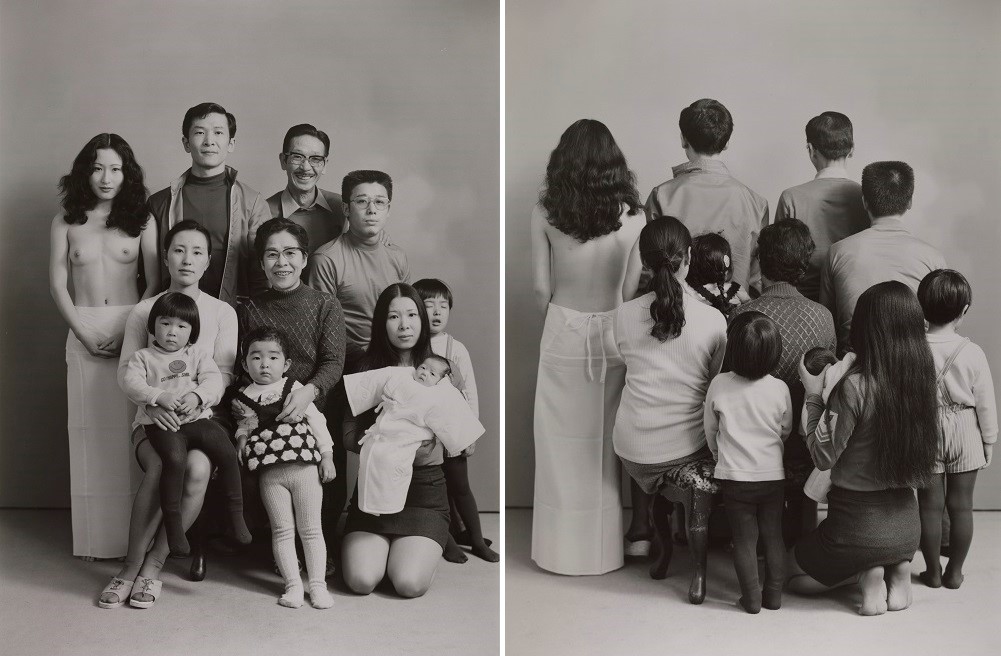
FAMILY (1971-1975 and 1985-1989) – The whole family gets photographed several times in their father study, using the large format machine with which he worked. A sort of performance, in which the conventions of the portrait are subverted by ingenious inventions. The group, in which sometimes also appears Fukase himself, is taken from the front as well as from the back, the parents are scantily clad, someone is in underwear and some others wear ski masks. A woman with naked breasts is always present (first his wife Yoko, then models). The series of the ’70s is playful, the second “chapter”, 10 years later, bears the signs of time: the shots are similar, but the atmosphere darkens and the family gets thinner. After his father’s death, his place is taken by a portrait, as well as that of his niece, who had died prematurely.
MEMORIES OF THE FATHER (1971-1987) – Family album, homage to his father Sukezo, portrayed both in moments of is daily life and when he was sick and dying. The lens focuses on the details of his tired eyes, wrinkled hands, worn body, conscious of an inevitable decadence. “My entire family, whose image I see upside-down in the frosted glass, will die one day. This camera, which reflects and freezes their images, is actually a device for archiving death.”
PRIVATE SCENES (1992)
Title of the 1992 exhibition at the Ginza Nikon Salon in Tokyo, it includes four series in which Fukase’s will to experiment reaches its climax. On the prints he paints patches or sinuous lines in color, creating unusual graphic effects.
In the series that gives the title to the exhibition – Private scenes – he portrays himself wandering the streets of Tokyo. Those are years of isolation, in which he photographs himself. His interest, he explained, is not self-portrait but the search for the relationship between himself and what he photographs.
HIBI – it’s a study on the cracks in Tokyo’s sidewalks, an allusion to the wrinkled skin and the advancing old age. Fukase adds initials and fingerprints: a projection of himself and his uniqueness.
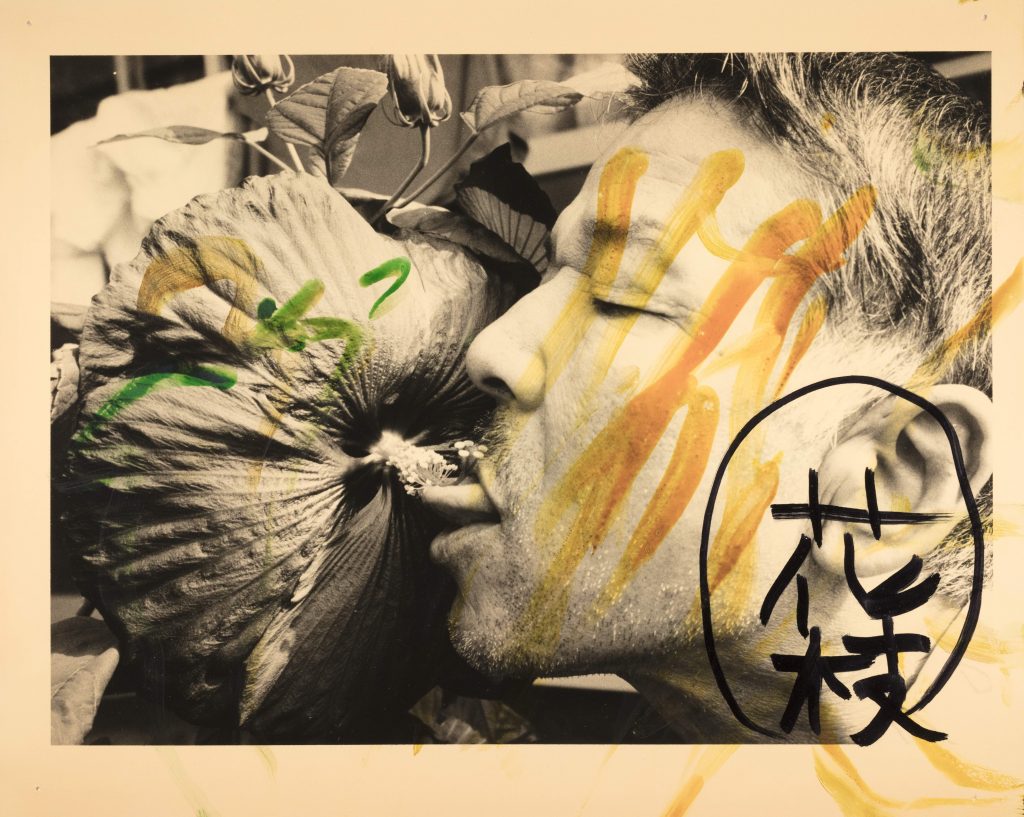
BEROBERO (Tongues) –It’s the result of night jaunts with friends and well-known photographers Daido Moriyama, Nobuyoshi Araki, Ishiuki Miyako. In every shot he takes pictures of himself repeating the same act: to touch with his tongue that of other people, men and women of all ages.
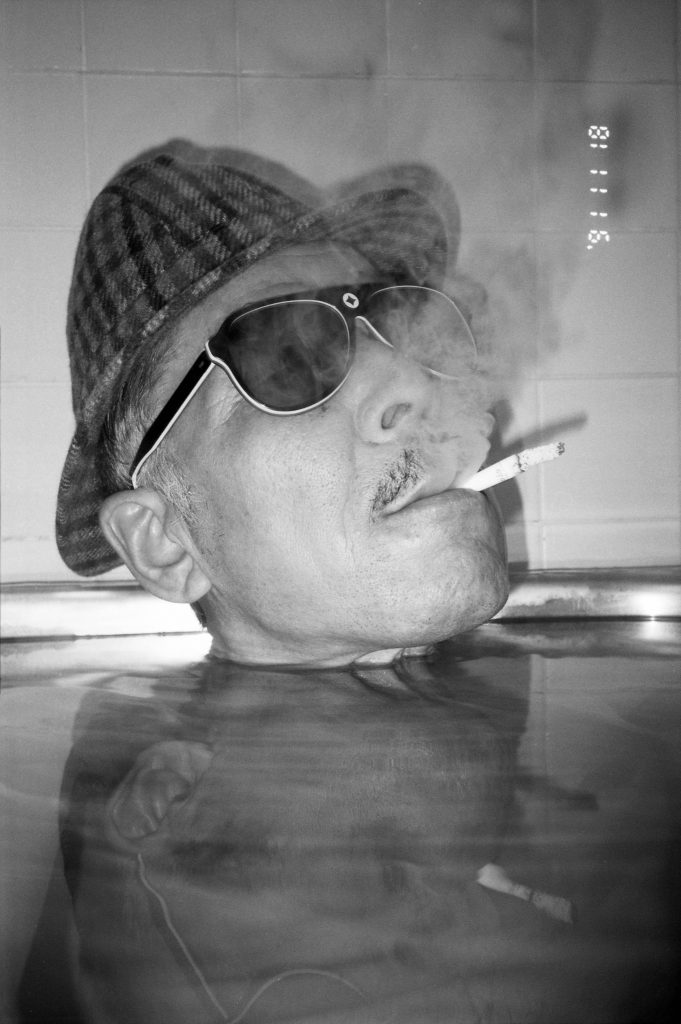
BUKUBUKU (Bubbles) – Bizarre self-portraits taken in the bathtub, with an underwater camera. With his face half submerged into the water, Fukase uses the flash with creativity, creating deformations, distortions, slanting reflections. In the exhibition, the 119 black and white prints are put together to form a larger image that covers an entire wall.“These are the original prints from the exhibition of ’92, that Fukase himself curated. They are arranged here exactly the way they were at that time. You can see in some of the prints the holes of the pins he used to put them on the wall” explains curator Hinde Haest. “ We found installations in the archive, it was really a nice discovery to see not only his photographs but also the way in which he thought to present the story. It was really a playful, unusual and anarchic way of hanging and presenting his whole work.”
The last act of an artist for whom photography is an endless playground, but above all a tentative to “hold back what flees”, as he said in 1976: “The task I have set myself of continually taking photographs in order to hold things back is possibly a way of compensating for life and the passing moment. It is doomed to failure, but it’s also what I most enjoy doing in life.”
The exhibition:
MASAHISA FUKASE | PRIVATE SCENES
Fondazione Sozzani
Corso Como 10, Milano
January 20th – March 31st 2019
Everyday, 10:30 am – 7:30 pm
Wednesday and Thursday, 10:30 am – 9:00 pm
Free entry from Monday to Friday
Saturday, Sunday and Holidays: 5 €, reduced 3 € (6-26 yo)
February 5, 2019
